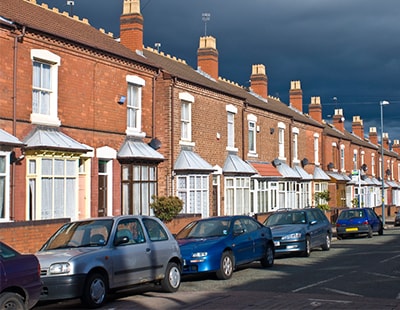
House prices rose by just 0.1 per cent in September - but they are still increasing by 10 per cent a year according to the Nationwide.
Wales and Northern Ireland were the strongest parts of the UK in the third quarter of 2021 while London was the weakest.
However, there’s a warning about the future from Robert Gardner, Nationwide’s chief economist. He says: “Annual house price growth remained in double digits for the fifth month in a row in September, though there was a modest slowdown to 10 per cent, from 11 in August. As a result, house prices remain around 13 per cent higher than before the pandemic began in early 2020.
“Raising a deposit remains the main barrier for most prospective first-time buyers. A 20 per cent deposit on a typical first-time buyer home is now around 113 per cent of gross income – a record high. Due to the historically low level of interest rates, the cost of servicing the typical mortgage is still well below the levels recorded in the run-up to the financial crisis. However, even on this measure, affordability is becoming more challenging.
“For example, if we look at typical mortgage payments relative to take-home pay across the country, it is notable that in the majority of UK regions (10 out of 13) this ratio is now above its long-run average. By contrast, pre-pandemic, this was only the case in one region (London).
“Recent price patterns suggest an element of rebalancing is occurring where most of the regions that have seen the strongest price growth are those in which affordability is still close to or below the long-run average.”
And he says the outlook remains uncertain, despite broadly good news about the containment of the pandemic.
“Activity is likely to soften for a period after the stamp duty holiday expires at the end of September, given the incentive for people to bring forward their purchases to avoid the additional tax” he says.
“Moreover, underlying demand is likely to soften around the turn of the year if unemployment rises as government support winds down, as seems likely.
“But this is far from assured. The labour market has remained remarkably resilient to date and, even if it does weaken, there is scope for shifts in housing preferences as a result of the pandemic – such as wanting more space or to relocate – to continue to support activity for some time yet.”
This is what two leading agents have to say about the figures:
“Only now can we see the true underlying resilience of the UK housing market. Prices and transaction numbers have not fallen off a cliff as the stamp duty holiday and furlough scheme ended and instead we are witnessing a gentle descent back towards normality. In similar fashion to other parts of the economy, demand outstrips supply and that will keep upwards pressure on prices, which we believe will end the year in mid-single digits. Barring any unforeseen circumstances, next spring should prove equally as robust for the UK housing market as the effects of the pandemic and government support measures fully work their way out of the system” - Tom Bill, Head of UK Residential Research at Knight Frank.
“An ambition to take advantage of the maximum stamp duty concession prompted many to bring forward home buying decisions so prices are not rising as rapidly now. However, these figures also confirm what we are seeing on the ground, that there is still plenty of life left in the market – in fact, many prefer buying and selling in a less frenzied atmosphere – underpinned by a continuing shortage of stock, particularly of three- and four-bedroom family houses. Looking forward, we don’t expect to see major changes although the increase in supply is helping to moderate prices further and bring more balance to the market.” - Jeremy Leaf, north London estate agent and a former RICS residential chairman.












.png)


.png)




Join the conversation
Be the first to comment (please use the comment box below)
Please login to comment